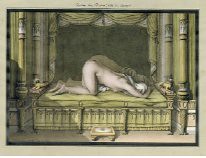
[Amazon.com]
[FR] [DE] [UK]
It’s actually strange that I’ve never actively come across this band besides of having heard of them. I am a big fan of Bill Laswell and all P-Funkiana, both are canonical to my encyclopedic work. Praxis introduces a whole collective of adventurous culture, from cutting edge music to exciting graphics, rebellious texts and tetsuoesque performances (is the life-size doll by Rammellzee?).
[Youtube=http://www.youtube.com/watch?v=KUL_gcHv0EA]
“Animal Behavior” (1992) from the Transmutation (Mutatis Mutandis) album.
Praxis is the name of an ever-changing Bill Laswell musical project. Praxis combines elements of different musical genres such as funk, jazz, hip-hop and heavy metal into highly improvised music. First appearing in 1992 with the critically acclaimed Transmutation (Mutatis Mutandis), Buckethead, Bill Laswell, Bernie Worrell and Brain have defined the direction of the band over the last 15 years.
Transmutation (Mutatis Mutandis) is the first album by Bill Laswell‘s everchanging “supergroup” Praxis. This first album features Buckethead on guitar, Bootsy Collins on bass and vocals, Brain on drums, Bernie Worrell on keyboards and DJ AF Next Man Flip on turntables and mixer.
Transmutation features a wide range of musical styles, all mixed together to make a very diverse and unique album. Styles such as heavy metal, funk, hip hop, ambient, jazz and blues are blended together to form a strange style of avant-garde, with extended guitar and keyboard solos, and highly improvised passages.
The artwork is by James Koehnline, photography by Thi-Linh Le and liner notes by Hakim Bey.









